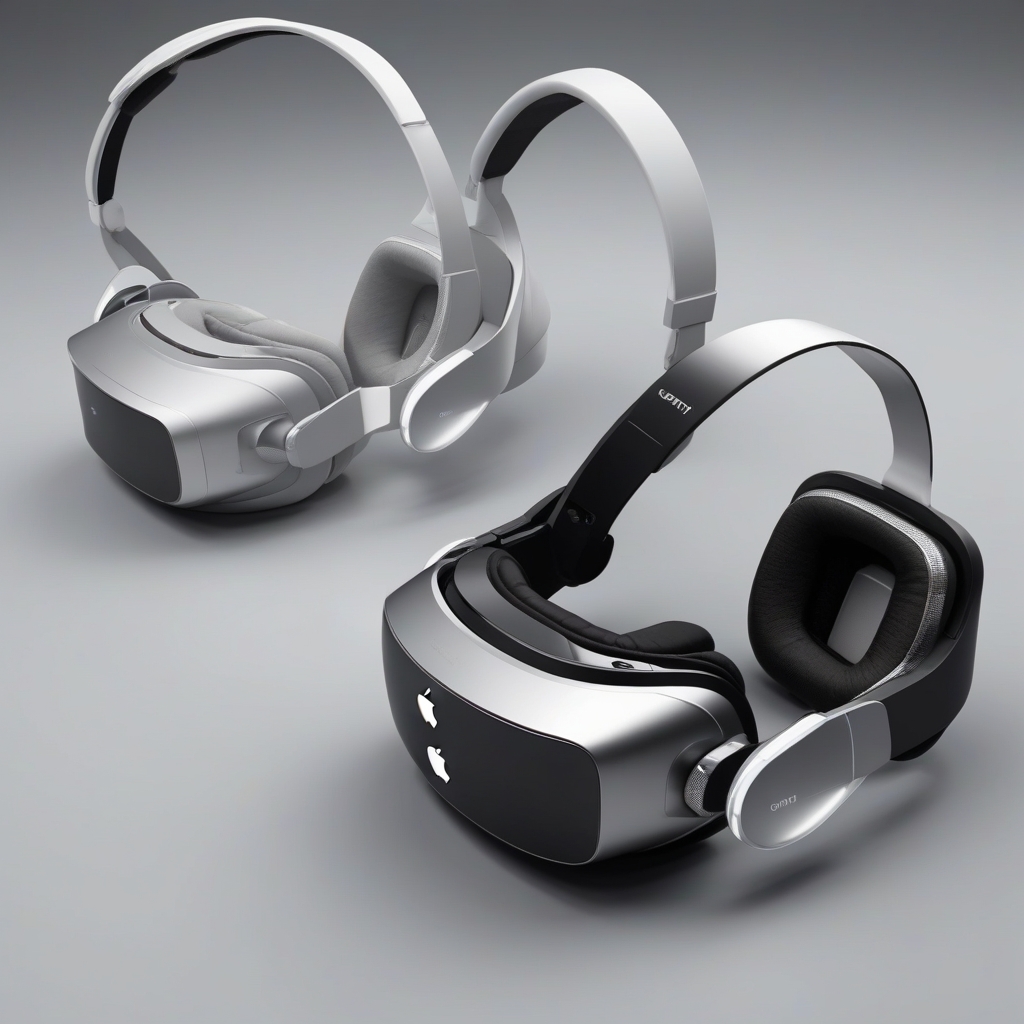Virtual Reality (VR) and Augmented Reality (AR): The Next Frontier
The tech landscape is bustling with innovations, and two titans are vying for supremacy in the VR and AR realms: Meta and Apple. As Meta introduces its Orion Headset to the market, Apple counters with the Vision Pro, presenting a fascinating showdown for tech enthusiasts and investors alike. Both devices promise to redefine our interaction with digital environments, yet their approaches and features could determine who leads this transformative wave.
The Meta Orion Headset: An Overview
Meta, previously known as Facebook, has been at the forefront of VR innovation through its Oculus line. The **Meta Orion** Headset represents the next evolution in their VR endeavors. Notably, this headset aims to bridge the gap between virtual worlds and real life in unprecedented ways.
Key Features of Meta Orion Headset
- Advanced Hand Tracking: Utilizing sophisticated hand-tracking technology, the Orion allows users to interact with virtual objects as if they were tangible.
- Field of View: Improved FOV offers a more immersive experience, making virtual environments come alive.
- Spatial Audio: Meta’s proprietary spatial audio enhances the virtual interaction, allowing sound to move dynamically with the user’s environment.
- Wireless Capability: The Orion is designed as a standalone, wireless unit, maximizing user mobility and convenience.
- High-Resolution Displays: Ultra-clear visuals ensure an unparalleled VR experience by reducing the screen-door effect prevalent in older headsets.
Apple Vision Pro: Stepping into the Future
Apple has finally unveiled its long-anticipated entry into the AR/VR market with the **Vision Pro**. Known for its ecosystem integration and user-friendly design, Apple aims to transform how users engage with digital interfaces.
Key Features of Apple Vision Pro
- Augmented Reality Integration: Vision Pro emphasizes AR, blending digital visuals seamlessly with the physical world.
- LiDAR and Advanced Sensors: These sensors provide precise spatial mapping, enhancing AR applications.
- 4K Micro OLED Displays: The introduction of micro OLED technology offers stunning clarity and color vibrancy.
- Ergonomic Design: True to Apple’s design ethos, Vision Pro is not only sleek but also comfortable for prolonged use.
- Seamless Ecosystem Sync: Easily sync with other Apple devices, utilizing features like Handoff and AirPlay for a cohesive experience.
Comparative Analysis: Meta Orion vs. Apple Vision Pro
While both the Meta Orion and Apple Vision Pro boast impressive specs, they cater to slightly different markets with unique strengths.
Design and Comfort
The Meta Orion features a more robust, gamer-centric design. Its comfort is tailored to long-duration usage, appealing predominantly to VR gaming enthusiasts. In contrast, the Apple Vision Pro highlights an elegant, minimalistic design, prioritizing comfort for everyday AR use and corporate environments.
Imaging and Display
Meta focuses heavily on ultra-clear VR experiences through high-resolution displays and advanced FOV tech, appealing to gamers and VR content creators. Apple’s Vision Pro, with its 4K micro OLED displays, emphasizes AR, providing superior visual integration with the physical world. This positions it as a versatile tool for both professionals and consumers looking for cutting-edge AR applications.
Interactivity and Inputs
Meta’s advanced hand-tracking and spatial audio create an immersive, interactive experience tailored for VR enthusiasts. Apple, however, leverages its ecosystem, offering interactions via familiar devices, such as iPhones and iPads, enabling a seamless, integrated user experience across multiple platforms.
Market Positioning
The Meta Orion is likely to capture the gaming and VR market, thanks to its specialized features. The Apple Vision Pro, on the other hand, is poised to dominate the AR sector, leveraging its broad ecosystem and user-friendly design appealing to a wider audience, including professional and casual users.
Strategic Implications for Investors
For investors, the battle between Meta and Apple in the VR/AR space presents significant opportunities and considerations.
Meta’s Strategy and Market Share
Meta has consistently been pushing boundaries in the virtual reality space. With the **Orion Headset**, Meta is focusing on building a strong community around VR gaming and immersive experiences. This strategic focus might allow Meta to capture a substantial share of the VR market, maintaining its leadership against less specialized competitors.
Apple’s Ecosystem and Innovation
Apple’s Vision Pro is more than just a headset; it’s an extension of its already vast and interlinked ecosystem. By leveraging technologies like LiDAR and integrating seamlessly with devices such as iPhones, iPads, and Macs, Apple is broadening the appeal and utility of AR in everyday life and professional settings. This could potentially lead to a much larger user base, making it an attractive option for investors.
The Future of VR/AR: What’s Next?
Both Meta and Apple are undeniably committed to driving the VR and AR revolution forward. As they continue to innovate and compete, we can expect rapid advancements in technology that will further blur the lines between the virtual and real worlds. For consumers and investors, this battle signifies more than just two products; it marks the beginning of a new era in digital interaction and augmented experiences.
Conclusion: The Choice Ahead
As the **Meta Orion Headset** goes head-to-head with Apple’s **Vision Pro**, consumers and investors face exciting decisions. Whether prioritizing VR’s immersive worlds or AR’s practical integrations, both headsets represent the pinnacle of current technology. The competition between these tech giants is poised to push both VR and AR into the mainstream, transforming how we interact with our digital world.
Invest wisely and watch closely, as the advancements from Meta and Apple will undoubtedly shape the future of both industries.

Leave a Reply